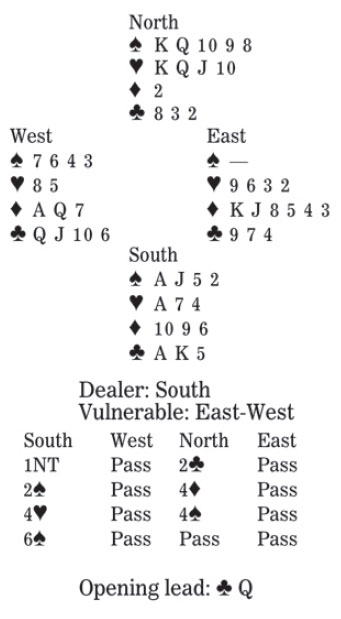Anne Frank wrote, "How wonderful it is that nobody need wait a single moment before starting to improve the world."
We have a wonderful convention for showing a single card in a suit - a splinter bid. It worked wonders on this deal. But, first, how should South play in six spades after West leads the club queen?
When South showed four spades (and denied four hearts) in answer to Stayman, North jumped to four diamonds, a splinter bid, indicating at least four-card spade support and game-going values with a singleton (or void) in diamonds. This slight overbid was music to South's ears, who no longer feared three fast diamond losers. He control-bid four hearts, then jumped to six spades when partner settled for four spades.
South seems to have one loser in each minor and only 11 winners: five spades, four hearts and two clubs. Where might he find an extra trick?
Winners most often come from a ruff in the shorter trump hand or establishment of a long suit. Here, each is impossible. Unusually, declarer must play for ruffs in the longer trump hand.
He wins with his club ace and plays a trump to dummy. (With this layout, he must not cash the spade ace or jack.) Then South loses a diamond. Let's say West wins and leads another trump. Declarer wins on the board, plays a club to his king, ruffs a diamond, leads a heart to the ace, ruffs his last diamond, draws trumps (overtaking dummy's king with his ace), and claims. He has taken four spades, four hearts, two clubs and those two diamond ruffs.

|
|
|
|
|
|
|
|
